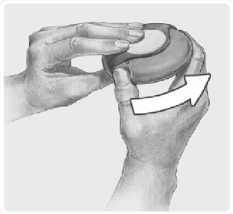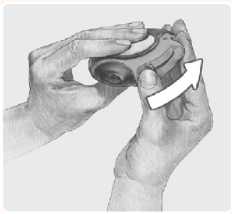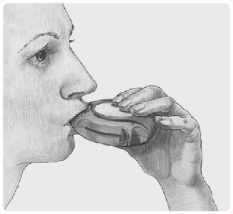Fluticasone Propionate 50 Micrograms Accuhaler
1. What Flixotide is and what it is used for
2. What you need to know before you use Flixotide

3. How to use Flixotide
PACKAGE LEAFLET: INFORMATION FOR THE USER FLIXOTIDE® ACCUHALER® 50 MICROGRAMS FLUTICASONE PROPIONATE ACCUHALER® 50 MICROGRAMS (fluticasone propionate)
This product is available in the above names but will be referred to as Flixotide throughout the remainder of this leaflet.
This product is available in multiple strengths and all strengths will be referred to throughout this leaflet.
Read all of this leaflet carefully before you start taking this medicine because it contains important information for you.
• Keep this leaflet. You may need to read it again.
• If you have any further questions, ask your doctor, nurse or pharmacist.
• This medicine has been prescribed for you only. Do not pass it on to others. It may harm them, even if their signs of illness are the same as yours.
• If you get any side effects, talk to your doctor, nurse or pharmacist. This includes any possible side effects not listed in this leaflet. See section 4.
What is in this leaflet:
1 What Flixotide is and what it is used for
2 What you need to know before you use Flixotide
3 How to use Flixotide
4 Possible side effects
5 How to store Flixotide
6 Contents of the pack and other information
Flixotide Accuhaler is a plastic inhaler device containing a foil strip with 28 or 60 blisters. Each blister contains 50, 100, 250 or 500 micrograms of the active ingredient fluticasone propionate. Fluticasone propionate belongs to a group of medicines called corticosteroids (often just called steroids). A very small dose of steroid is needed when it is inhaled. This is because it is inhaled straight to your lungs.
Flixotide works by reducing swelling and irritation in the lungs. They have what is called an 'anti-inflammatory action'.
Flixotide helps to prevent asthma attacks in people who need regular treatment. This is why they are sometimes called 'preventers'. They need to be used regularly, every day.
Flixotide will not help treat sudden asthma attacks where you feel breathless.
• A different medicine is used for treating sudden attacks (called a 'reliever').
• If you have more than one medicine, be careful not to confuse them.
Do not use Flixotide:
• If you are allergic to fluticasone propionate or any of the other ingredients of this medicine (listed in Section 6)
Do not use Flixotide if any of the above applies to you. If you are not sure, talk to your doctor, nurse or pharmacist before using Flixotide.
Warnings and precautions
Talk to your doctor, nurse or pharmacist before taking Flixotide if:
• you have ever been treated for tuberculosis (TB)
• you are using Flixotide at the same time as taking steroid tablets. Also if you have just finished taking steroid tablets. In both cases, you should carry a steroid warning card until your doctor tells you not to carry one
If you are not sure if any of the above applies to you, talk to your doctor or pharmacist before using Flixotide.
Other medicines and Flixotide
Tell your doctor, nurse or pharmacist if you are taking, have recently taken or might take any other medicines, including medicines obtained without a prescription. This includes herbal medicines. Remember to take this medicine with you if you have to go into hospital.
In particular tell your doctor or pharmacist if you are taking any of the following:
• a type of antiviral medicine known as a 'protease inhibitor' (such as ritonavir)
• medicines used to treat fungal infections (such as ketoconazole)
If you are not sure if any of the above applies to you, talk to your doctor or pharmacist before using Flixotide.
Using Flixotide with food and drink
You can use Flixotide at any time of day, with or without food.
Pregnancy and breast-feeding
If you are pregnant or are breast-feeding, think you may be pregnant or planning to have a baby, ask your doctor for advice before taking this medicine.
Driving and using machines
Flixotide is not likely to affect you being able to drive or use any tools or machines.
Flixotide contains lactose
Flixotide contains lactose (a type of sugar). If you have been told by your doctor that you cannot tolerate or digest some sugars (have an intolerance to some sugars), talk to your doctor before using this medicine.
Flixotide comes in four different strengths. Your doctor will have decided which strength you need. Always use this medicine exactly as your doctor has told you. Check with your doctor, nurse or pharmacist if you are not sure.
Using this medicine
The medicine in Flixotide should be inhaled using a special kind of inhaler called an Accuhaler.
• Make sure that you have one and can use it properly
• Instructions on how to use the inhaler are given as a step-by-step guide
• You should be able to taste the powder on your tongue if you have taken it correctly
• It takes a few days for this medicine to work and it is very important that you use it regularly
Adults and Children over 16 years of age
Mild asthma
• The usual starting dose is 100 micrograms twice a day Moderate to severe asthma
• The usual starting dose is 250 to 500 micrograms twice a day
• The most taken should be 1000 micrograms twice a day
Children (4 to 16 years of age)
• The usual starting dose is 50 micrograms twice a day
• The most taken should be 200 micrograms twice a day
Flixotide Accuhaler 250 micrograms and Flixotide Accuhaler 500 micrograms are not recommended for children 16 years and under.
It is recommended that children being treated with steroids, including Flixotide Accuhaler have their height checked regularly by their doctor.
Your doctor may give you a Flixotide Accuhaler of a higher strength if your dose is increased.
If you are using high doses of an inhaled steroid for a long time you may sometimes need extra steroids for example during stressful circumstances such as a road traffic accident or before an operation. Your doctor may decide to give you extra steroid medicines during this time.
Patients who have been on high doses of steroids, including Flixotide Accuhaler for a long time, must not stop taking their medicine suddenly without talking to their doctor. Suddenly stopping treatment can make you feel unwell and may cause symptoms such as vomiting, drowsiness, nausea, headache, tiredness, loss of appetite, low blood sugar level and fitting.
Instructions for use
• Your doctor, nurse or pharmacist should show you how to use your inhaler. They should check how you use it from time to time. Not using the Flixotide Accuhaler properly or as prescribed may mean that it will not help your asthma as it should
• The Accuhaler is provided in a sealed foil wrapper. The wrapper provides protection from moisture and should only be opened when you are ready to use it for the first time. Once opened the foil wrapper should be discarded.
• The Accuhaler device holds blisters containing Flixotide as a powder
• There is a counter on top of the Accuhaler which tells you how many doses are left. It counts down to 0. The numbers 5 to 0 will appear in red to warn you when there are only a few doses left. Once the counter shows 0, your inhaler is empty.
Do not use your inhaler more often than the doctor told you to. Tell your doctor if your medicine does not seem to be working as well as usual, as your chest problem may be getting worse and you may need a different medicine.
Your doctor may have told you to take more than this as an emergency treatment if your wheezing or breathing gets very bad. It is very important that you keep to your doctor's instructions as to how many blisters to take and how often to use your inhaler.
Using your inhaler
1. Inside the carton, your Accuhaler is provided in a sealed foil wrapper. To open this wrapper, tear along the jagged edge, then remove the Accuhaler, and throw the wrapper away. If you have trouble tearing the foil, do not use scissors or any other sharp objects as you may harm yourself or the Accuhaler. Ask someone to help you.
2. To open your Accuhaler, hold the outer case in one hand and put the thumb of your other hand on the thumbgrip. Push your thumb away from you as far as it will go. You will hear a click.
This will open a small hole in the mouthpiece
3. Hold your Accuhaler with the mouthpiece towards you. You can hold it in either your right or left hand. Slide the lever away from you as far as it will go.
You will hear a click. This places a dose of your medicine in the mouthpiece. Every time the lever is pulled back a blister is opened inside and the powder made ready for you to inhale. Do not play with the lever as this opens the blisters and wastes medicine.
4. Hold the Accuhaler away from your mouth, breathe out as far as is comfortable. Do not breathe into your Accuhaler.
Do not breathe in again yet.
5. Put the mouthpiece to your lips; breathe in steadily and deeply through the Accuhaler with your mouth, not through your nose. Remove the Accuhaler from your mouth. Hold your breath for about 10 seconds or for as long as is comfortable.
Breathe out slowly.



